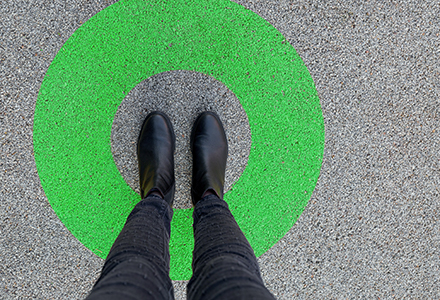Better Questions Lead to Better Ideas
Are you asking the right questions in your brainstorming sessions?

Einstein was attributed for saying if he had an hour to solve a problem that would save the world, he would spend 55 minutes determining the proper question to ask, and five minutes finding the solution. We’ve found this to be good advice when it comes to creative idea generation.
Don’t jump to conclusions
It’s human nature to want to quickly jump to solving a problem. In fact, we often have clients tell us they need a video or a brochure or want to create a new “marketing thing” they recently learned about. When asked why, many clients aren’t sure how the new “thing” will help them achieve their goal or solve their problem. Rather, they’ve assumed they should do what others are doing to remain competitive.
Unfortunately, many organizations spend a lot of energy and money trying to create quick fixes when issues arise. But this approach can often mask a bigger problem or even create a new issue.
Take your time
Learning to take your time and ask better questions will lead you and your organization to better ideas and stronger solutions.
For example, Toyota once asked employees for ideas on how to make the workplace more productive. Very few suggestions were submitted and they lacked new insight. The leadership then decided to ask the question in a different way: “How can we make your job easier?” Dozens of inspiring, practical, and specific suggestions were made, many of which were successfully implemented to improve efficiency.
Reframe your perspective
To get to an effective solution, spend time rephrasing your question before you start brainstorming ways to solve it. Look at the question from others’ perspectives and different advantage points. Try to generate as many ways as you can to phrase it to get to all the specific issues.
In the case of Toyota, they could have asked the question in several other ways: “How can we reduce waste? If you owned this company, what would you do differently? What is the most efficient thing you do in your job? What do you do during the day that seems unnecessary?” And so on.
Explore the positive and negative sides of your question. Ask it in a specific way and a very broad way. Think about how your key audiences, top management, or even a stranger to your business might ask the question?
Give your process structure
After you’ve come up with 20 – 50 ways to ask the same question, determine which one (or top few) really gets to the heart of the issue. Once you’ve narrowed in on the best questions, go ahead and start answering the questions with brainstorming or team input. This process shouldn’t take long because your idea generation will be focused on the things that are most relevant and most likely to solve the real problem.
If you’re struggling to determine which questions are best, consider placing them on an evaluation grid to help you sort out what’s most relevant to your problem (important) and most likely to get implemented (easy).
You’ll find that getting to the most important questions may be harder than you think, but once you figure that part out, the answers will come easier than you expect. Plus, the ideas will be more creative and more effective as a result of taking your time to get to the right questions.
Get Out of Your Comfort Zone
Three things to try when your brainstorming has gotten stale.
The Lotus Blossom Technique
An organized and visual brainstorming activity that will generate dozens of new ideas.
Best and Worst
An icebreaker to learn your team’s hopes and fears about a project’s outcome.



